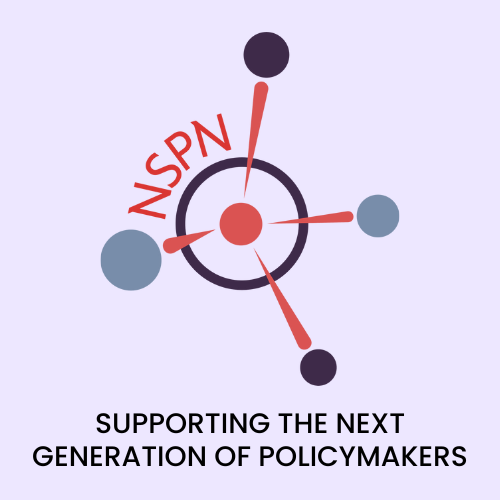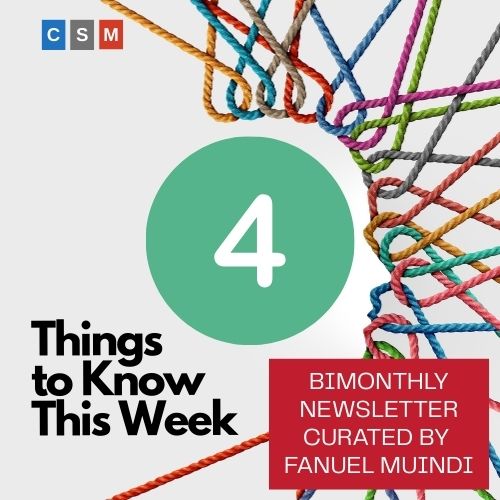CivicSciTimes - Stories in Science
Flickering Lights in the Darkness: How Microscopy Shaped My Scientific Path
Natalie Nannas: “Watching those flickering green dots shuttling around the cell convinced me that my future was in research.”

Natalie Nannas
Natalie Nannas is an Assistant Professor of Biology at Hamilton College in Clinton, New York, where she teaches courses in genetics, molecular biology, and bioethics. Dr. Nannas graduated from Grinnell College with bachelor degrees in biological chemistry and French. She received her Master’s and PhD from Harvard University in molecular biology and genetics. Dr. Nannas conducted her postdoctoral research at the University of Georgia where she won a National Science Foundation Plant Genome Postdoctoral Fellowship. At Hamilton College, Dr. Nannas enjoys teaching and sharing her passion for microscopy with her undergraduate research students. When not glued to a microscope, she loves spending time with her husband and two daughters. Cover photo courtesy of Dr. Natalie Nannas. The story below was edited by Katelyn Comeau
Key Points:
To me, doing science requires three things:
- Passion: you have to find the thing that excites you, that gets you out of bed and into lab every day. It can be anything, but following that passion will keep you going when challenges arise.
- Questions: science is not a textbook, it is a frontier. Ask questions that no one knows the answers to, and then pursue them.
- Perseverance: my thesis advisor once told me that if more than 10% of your experiments are working, you are not doing hard enough science. There is a lot of failure in science, but you have to learn from it and keep going. [/su_boxnote]

Natalie Nannas, PhD.
I was huddled alone in the darkness when it finally happened. With my eyes glued to the computer screen, I saw a flicker of green and my hopes soared. As the signal became clearer, I let out a shout of victory. My fluorescence tagged proteins were finally expressing, and to my amazement, the proteins were localizing to the cellular regions that I had predicted. Through this small moment, I realized that conducting research means acknowledging the small victories won through hard work and persistence along the way to larger goals. I know that scientific research is my future because I love the challenge of formulating methods to answer questions, and thinking around the obstacles that inevitably arise.
My name is Natalie Nannas, and I wrote this passage over a decade ago as a senior in college. It was the opening paragraph of my personal statement to graduate school. I had just completed an exciting summer research experience, one where I was able to ask my own questions, form hypotheses, and test them. This experience taught me that I wanted to become a scientist so I could help push the boundary of knowledge forward. Looking back, I now realize how important seeing that “flicker of green” was for my path. It sparked my passion for fluorescence microscopy, which has shaped my scientific career through my PhD, postdoctoral fellowship, and beyond.
I started my college experience with no idea what I wanted to become – or rather, too many ideas. I wanted to explore everything from biology to sociology to French. I went to Grinnell College, a small liberal arts college nestled in the cornfields of Iowa, because of this desire to explore. I loved how a liberal arts education encouraged students to become well-rounded scholars. After my first few semesters, I was leaning towards a major in biochemistry, but I was not sure what I would do with this degree. I was drawn to medicine because it was the only science career path I knew. My professors encouraged me to seek out research opportunities, and after my junior year, I was accepted into a summer program at Princeton University.
It was at Princeton in the lab of Dr. Mark Rose, that I had this first experience with fluorescence microscopy. Something about seeing biology in action clicked in me. I loved watching fluorescent proteins flickering around in the cells, and watching led to asking questions. During the summer, I was investigating how yeast cells fuse together. The yeast fusion mechanism is similar to the human processes that give rise to organized muscle tissue, allow egg and sperm to unite, and mediate the release of neurotransmitters from neurons. When I arrived in the lab, Dr. Rose had a project ready for me, but I was so fascinated as I watched the vesicles (little membrane-bound sacs) shuttling around in the yeast cells. I began asking my own questions, and one in particular was very intriguing to me: what was inside of those vesicles?
My knowledge of science had mostly come from textbooks, so it was surprising to me there was no answer to my question. Dr. Rose encouraged me to pursue the question, so I designed experiments to test my predictions. Based on previous studies, I hypothesized that two enzymes capable of degrading the cell wall were packaged inside of the vesicles. I tagged these proteins with green fluorescence, and then observed them under the microscope. After many setbacks and challenges, one day near the end of the summer my green proteins appeared! Not only were they visible, but they were co-localizing with the vesicles, suggesting these specific proteins were indeed located inside of the vesicle.
Watching those flickering green dots shuttling around the cell convinced me that my future was in research. I loved that for a moment in time, I was the only one in the world with this knowledge.
I also loved that through effort and persistence, I had learned something new, something that could contribute to our collective knowledge. The thrill I experienced venturing into the unknown showed me that a PhD was the right path for me.
After a marathon of graduate school applications and interviews, I was thrilled to receive a spot in the Molecules, Cells and Organisms PhD program at Harvard University. I joined Dr. Andrew Murray’s lab for my doctoral thesis research, and it felt like an intellectual homecoming. Andrew used fluorescence microscopy to study how chromosomes divide during cell division. The dance of chromosomes attaching to the spindle and being pulled apart by this machinery is both mesmerizing to watch and vital to human health. Mistakes in this process can lead to cancer and other congenital diseases. I found my life’s work in this finely choreographed movement of chromosomes and spindle fibers. To this day, I want to understand how this critical process happens so we can addresses the causes of disease and develop new therapies.
The road to my PhD was not smooth, but the simple joy of watching life move under the microscope kept me going. I spent four years working on a project that did not succeed. I was testing a model of how chromosomes understand their correct attachment to the spindle. We hypothesized that rings of signaling proteins could slide on chromosomes to cluster around incorrect attachments and activate a delay in cell division. On correctly attached chromosomes however, these protein rings would be forced to slide away, unable to cluster and signal a cell cycle delay. It was an ambitious project to prove this model, and I worked for years engineering specialized chromosomes to test our hypothesis. Every time I collected data that did not support the model, I was sure it was a matter of changing the parameters, rebuilding the genetic constructs, or trouble-shooting a protocol.
To keep myself going, I focused the small victories: making fluorescent-tagged chromosomes, engineering ways to tether chromosomes together, learning new techniques and knowledge, and gaining skills in communicating my research. Sharing my knowledge through teaching and mentoring undergraduates in lab also helped me remain enthusiastic and energized. Besides microscopy, my other passion is teaching, which is why I pursued a career as a faculty at a liberal art college.
Being able to teach, engage in community outreach, and develop pedagogical skills, helped me balance the challenges in lab.
After four years, Andrew had to pull me back from the pursuit of our model; I realized that I had lost sight of asking questions – I was so focused on proving one idea. I learned how important it is to keep your eyes and your mind open to new questions, and to pursue many of them as possible, because much of science is based on trial and error, exploration and failure. Even though my first project failed, the experience was not a failure. From it, I learned molecular techniques, data analysis, critical thinking and most importantly, resiliency. I learned that no matter what happened that day, you can come back and try again the next day.
My subsequent projects involved understanding how the spindle machinery is constructed and how chromosomes correctly attach to it. I learned that spindles are built through a series of inward and outward pushing forces, and I discovered that chromosomes contribute an inward pulling force during this delicate tug of war. By measuring the distance between red fluorescent dots that marked the ends of the spindle, I learned that manipulating these forces altered the length of the spindle. I also watched chromosomes attach to the spindle. Correctly attached chromosomes experience pulling and tension forces that stretch them apart, which I could visualize as tiny green pinpricks. To this day, there is something magical about watching those flickering green chromosomes dancing between the red ends of the spindle.
My love of microscopy and chromosomes led me to a postdoctoral fellowship with Dr. Kelly Dawe at the University of Georgia. In his lab, I won a National Science Foundation fellowship to pioneer a microscopy technique for imaging live plant meiotic cells. No one had ever seen plant spindles pull chromosomes apart in meiosis, the cell division that produces eggs and sperm. I remember the moment when I became the first person to see this event. Just like that moment that started me on this path, I was huddled alone in the darkness when it finally happened. With my eyes glued to the computer screen, I let out a shout of victory when I saw those green flickering spindle fibers… and the rest is a story for another day.
The CS Media Lab is a Boston-anchored civic science news collective with local, national and global coverage on TV, digital print, and radio through CivicSciTV, CivicSciTimes, and CivicSciRadio. Programs include Questions of the Day, Changemakers, QuickTake, Consider This Next, Stories in Science, Sai Resident Collective and more.

-
Civic Science Times4 weeks ago
Ecosystem building in action: Science Talk 2025 and the dynamic civic science conference landscape
-
Civic Science Times1 week ago
Dear Colleagues: Now is the time to scale up public engagement with science
-
Civic Science Times2 weeks ago
Weekend Watch: At Boston College, the McMullen Museum of Art presents “Wonders of Creation: Art, Science, and Innovation in the Islamic World”
-
CivicSciTV - Questions of the Day4 weeks ago
Dr. John Besley shares the actionable insights from the Nature global study on trust in scientists




















